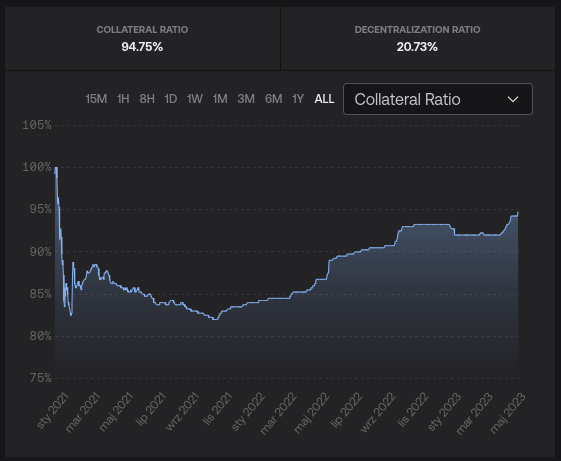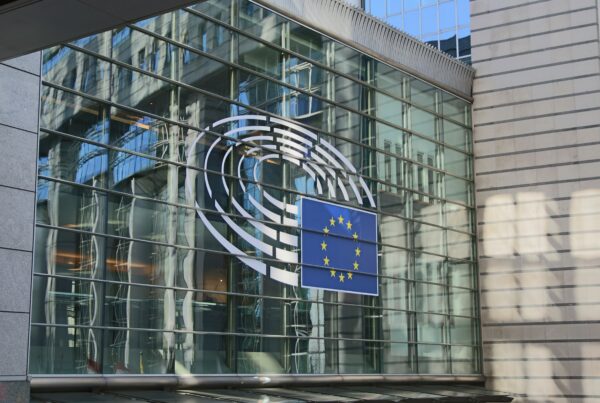As the stablecoin market continues to evolve, FRAX has emerged as a promising solution to address the challenges faced by traditional stablecoins. Let’s explore FRAX’s innovative approach, the mechanics behind its price stability, and why it’s gaining traction in the DeFi space. 🔎
🧪 What is FRAX?
FRAX is a decentralized, algorithmic stablecoin designed to maintain a stable value relative to the US Dollar. It is unique because it combines the best of collateralized and algorithmic stablecoins to create a hybrid solution. FRAX is partially backed by collateral (USDC) and partially stabilized algorithmically, introducing a new level of stability and trustworthiness to the stablecoin ecosystem. 💡
🌟 Key features of FRAX:
- Hybrid approach: combines collateral and algorithmic stabilization 🔄
- Decentralized and community-driven governance 🌐
- Robust price stability mechanisms 💹
- Strong liquidity and integration with major DeFi platforms 💧
🏗️ How does FRAX work?
FRAX employs a two-token system, consisting of FRAX (the stablecoin) and Frax Shares (FXS, the governance token). The system’s collateral ratio determines the amount of collateral (USDC) backing each FRAX token, while the remaining value is algorithmically stabilized. The collateral ratio is dynamic and determined by the market demand for FRAX and FXS. 📊
🔗 Price Stabilization Mechanisms for FRAX:
- Mint and Redeem: Users can mint new FRAX tokens by locking up USDC and/or FXS, or redeem FRAX for USDC and/or FXS, depending on the collateral ratio. This mechanism helps maintain the $1 peg. 🪙
- Seigniorage: If FRAX trades above $1, the protocol mints and sells new FRAX tokens, capturing the seigniorage profit. This profit is distributed to FXS stakers, incentivizing participation and stabilizing the FRAX price. 💰
- FXS Buybacks: If FRAX trades below $1, the protocol uses accumulated seigniorage profits to buy and burn FXS, helping restore the peg. 🔥
🤝 The Relationship between USDC and FXS in Maintaining the Peg:
The dynamic interplay between USDC and FXS plays a crucial role in maintaining FRAX’s price peg. USDC acts as collateral, providing a solid foundation for the stablecoin, while FXS governs the algorithmic stabilization mechanism. As the collateral ratio fluctuates, the protocol adjusts the backing of FRAX between USDC and FXS to keep the price stable at $1.
In periods of high demand for FRAX, the collateral ratio decreases, and the protocol mints more FRAX to satisfy demand. During this decollateralization process, the protocol uses the excess USDC to buy and burn FXS, creating value for FXS holders. Conversely, when the demand for FRAX decreases, the collateral ratio increases, and the protocol mints FXS to support the FRAX price. This recollateralization process helps restore the peg and maintain stability.

🚀 Frax v2: Pioneering Autonomous Central Banking Legos with AMOs
Frax v2 introduces “Algorithmic Market Operations Controllers” (AMOs), autonomous contracts that enact monetary policy without impacting the FRAX price peg. AMOs allow for open market operations while preserving FRAX’s core stability mechanism.🌐
Frax v1 employed a single AMO: the fractional-algorithmic stability mechanism. It dynamically adjusted the protocol’s collateral ratio based on the market price of FRAX, maintaining a tight peg and maximizing capital efficiency for money creation. 📊
Frax v2 generalizes this mechanism, creating a Turing-complete design space of stability mechanisms. Each AMO is like a central bank money lego, with four properties:
- Decollateralize – Lowers the collateral ratio.
- Market operations – Operates in equilibrium without changing the collateral ratio.
- Recollateralize – Increases the collateral ratio.
- FXS1559 – Formalized accounting of the AMO’s balance sheet.
AMOs empower FRAX to maximize flexibility and opportunity without altering the core stability mechanism.




